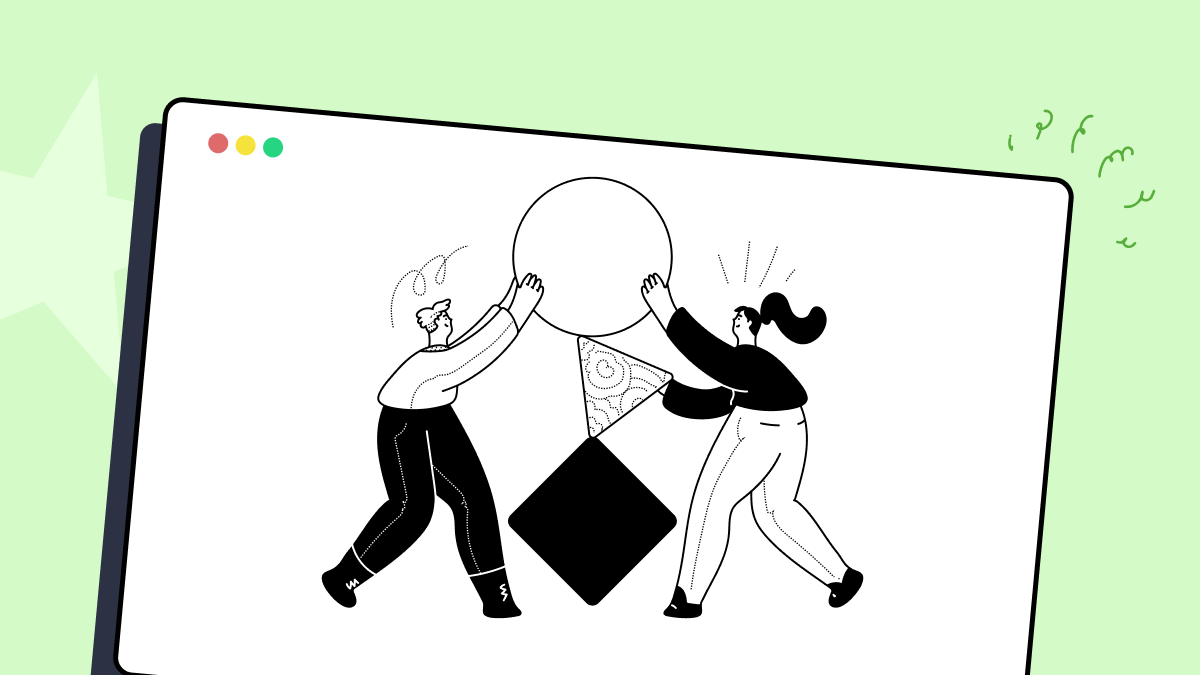How to use OnStateTransition method of Microsoft.Coyote.Actors.ActorRuntimeLogXmlFormatter class
Best Coyote code snippet using Microsoft.Coyote.Actors.ActorRuntimeLogXmlFormatter.OnStateTransition
ActorRuntimeLogXmlFormatter.cs
Source: ActorRuntimeLogXmlFormatter.cs
...306 this.Writer.WriteAttributeString("isTargetHalted", isTargetHalted.ToString());307 this.Writer.WriteEndElement();308 }309 /// <inheritdoc/>310 public void OnStateTransition(ActorId id, string stateName, bool isEntry)311 {312 if (this.IsClosed)313 {314 return;315 }316 this.Writer.WriteStartElement("State");317 this.Writer.WriteAttributeString("id", id.ToString());318 this.Writer.WriteAttributeString("state", stateName);319 this.Writer.WriteAttributeString("isEntry", isEntry.ToString());320 this.Writer.WriteEndElement();321 }322 /// <inheritdoc/>323 public void OnStopTimer(TimerInfo info)324 {...OnStateTransition
Using AI Code Generation
1using System;2using System.Collections.Generic;3using System.Linq;4using System.Text;5using System.Threading.Tasks;6using Microsoft.Coyote.Actors;7{8 {9 static void Main(string[] args)10 {11 ActorRuntimeLogXmlFormatter formatter = new ActorRuntimeLogXmlFormatter();12 formatter.OnStateTransition += Formatter_OnStateTransition;13 Console.ReadLine();14 }15 private static void Formatter_OnStateTransition(object sender, OnStateTransitionEventArgs e)16 {17 Console.WriteLine("OnStateTransition event fired");18 }19 }20}OnStateTransition
Using AI Code Generation
1using Microsoft.Coyote.Actors;2using Microsoft.Coyote.Actors.Timers;3using Microsoft.Coyote.Specifications;4using System;5using System.Collections.Generic;6using System.Linq;7using System.Text;8using System.Threading.Tasks;9using System.Xml.Linq;10{11 {12 private XElement _root;13 private XElement _current;14 private XElement _currentMachine;15 private XElement _currentAction;16 private string _currentEvent;17 private string _currentMachineId;18 private string _currentMachineType;19 private string _currentMachineState;20 private string _currentMachineStateName;21 private string _currentMachineStateFullName;22 private string _currentMachineStateType;23 private string _currentMachineStateTypeFullName;24 private string _currentMachineStateTypeAssemblyQualifiedName;25 private string _currentMachineStateTypeType;26 private string _currentMachineStateTypeTypeFullName;27 private string _currentMachineStateTypeTypeAssemblyQualifiedName;28 private string _currentMachineStateTypeTypeType;29 private string _currentMachineStateTypeTypeTypeFullName;30 private string _currentMachineStateTypeTypeTypeAssemblyQualifiedName;31 private string _currentMachineStateTypeTypeTypeType;32 private string _currentMachineStateTypeTypeTypeTypeFullName;33 private string _currentMachineStateTypeTypeTypeTypeAssemblyQualifiedName;34 private string _currentMachineStateTypeTypeTypeTypeType;35 private string _currentMachineStateTypeTypeTypeTypeTypeFullName;36 private string _currentMachineStateTypeTypeTypeTypeTypeAssemblyQualifiedName;37 private string _currentMachineStateTypeTypeTypeTypeTypeType;38 private string _currentMachineStateTypeTypeTypeTypeTypeTypeFullName;39 private string _currentMachineStateTypeTypeTypeTypeTypeTypeAssemblyQualifiedName;40 private string _currentMachineStateTypeTypeTypeTypeTypeTypeType;41 private string _currentMachineStateTypeTypeTypeTypeTypeTypeTypeFullName;42 private string _currentMachineStateTypeTypeTypeTypeTypeTypeTypeAssemblyQualifiedName;43 private string _currentMachineStateTypeTypeTypeTypeTypeTypeTypeType;44 private string _currentMachineStateTypeTypeTypeTypeTypeTypeTypeTypeFullName;45 private string _currentMachineStateTypeTypeTypeTypeTypeTypeTypeTypeAssemblyQualifiedName;46 private string _currentMachineStateTypeTypeTypeTypeTypeTypeTypeTypeType;OnStateTransition
Using AI Code Generation
1using Microsoft.Coyote.Actors;2using Microsoft.Coyote.SystematicTesting;3using System;4using System.Collections.Generic;5using System.IO;6using System.Linq;7using System.Text;8using System.Threading.Tasks;9{10 {11 static void Main(string[] args)12 {13 var configuration = Configuration.Create();14 configuration.TestingEngine = TestingEngine.SystematicTesting;15 configuration.SchedulingStrategy = SchedulingStrategy.DFS;16 configuration.SchedulingIterations = 100;17 configuration.ReportActivityCoverage = true;18 configuration.ReportSchedulingCoverage = true;19 configuration.ReportDataRaces = true;20 configuration.ReportDeadlocks = true;21 configuration.ReportLivelocks = true;22 configuration.ReportUnhandledExceptions = true;OnStateTransition
Using AI Code Generation
1using System;2using System.IO;3using System.Xml;4using System.Xml.Linq;5using Microsoft.Coyote.Actors;6using Microsoft.Coyote.Actors.BugFinding;7using Microsoft.Coyote.Actors.BugFinding.Replay;8using Microsoft.Coyote.Actors.BugFinding.Replay.Strategies;9using Microsoft.Coyote.Actors.BugFinding.Strategies;10using Microsoft.Coyote.Actors.BugFinding.Tracing;11using Microsoft.Coyote.Actors.BugFinding.Tracing.Schedule;12using Microsoft.Coyote.Actors.BugFinding.Tracing.Schedule.Strategies;13using Microsoft.Coyote.Actors.BugFinding.Tracing.Schedule.Trace;14using Microsoft.Coyote.Actors.BugFinding.Tracing.Schedule.Trace.Custom;15using Microsoft.Coyote.Actors.BugFinding.Tracing.Schedule.Trace.Custom.Custom;16using Microsoft.Coyote.Actors.BugFinding.Tracing.Schedule.Trace.Custom.Custom.Custom;17using Microsoft.Coyote.Actors.BugFinding.Tracing.Schedule.Trace.Custom.Custom.Custom.Custom;18using Microsoft.Coyote.Actors.BugFinding.Tracing.Schedule.Trace.Custom.Custom.Custom.Custom.Custom;19using Microsoft.Coyote.Actors.BugFinding.Tracing.Schedule.Trace.Custom.Custom.Custom.Custom.Custom.Custom;20using Microsoft.Coyote.Actors.BugFinding.Tracing.Schedule.Trace.Custom.Custom.Custom.Custom.Custom.Custom.Custom;21using Microsoft.Coyote.Actors.BugFinding.Tracing.Schedule.Trace.Custom.Custom.Custom.Custom.Custom.Custom.Custom.Custom;22using Microsoft.Coyote.Actors.BugFinding.Tracing.Schedule.Trace.Custom.Custom.Custom.Custom.Custom.Custom.Custom.Custom.Custom;OnStateTransition
Using AI Code Generation
1Microsoft.Coyote.Actors.ActorRuntimeLogXmlFormatter actorRuntimeLogXmlFormatter = new Microsoft.Coyote.Actors.ActorRuntimeLogXmlFormatter();2actorRuntimeLogXmlFormatter.OnStateTransition += (sender, e) =>3{4 Console.WriteLine(e.State);5};6Microsoft.Coyote.Actors.ActorRuntimeLogXmlFormatter actorRuntimeLogXmlFormatter = new Microsoft.Coyote.Actors.ActorRuntimeLogXmlFormatter();7actorRuntimeLogXmlFormatter.OnStateTransition += (sender, e) =>8{9 Console.WriteLine(e.State);10};11Microsoft.Coyote.Actors.ActorRuntimeLogXmlFormatter actorRuntimeLogXmlFormatter = new Microsoft.Coyote.Actors.ActorRuntimeLogXmlFormatter();12actorRuntimeLogXmlFormatter.OnStateTransition += (sender, e) =>13{14 Console.WriteLine(e.State);15};16Microsoft.Coyote.Actors.ActorRuntimeLogXmlFormatter actorRuntimeLogXmlFormatter = new Microsoft.Coyote.Actors.ActorRuntimeLogXmlFormatter();17actorRuntimeLogXmlFormatter.OnStateTransition += (sender, e) =>18{19 Console.WriteLine(e.State);20};21Microsoft.Coyote.Actors.ActorRuntimeLogXmlFormatter actorRuntimeLogXmlFormatter = new Microsoft.Coyote.Actors.ActorRuntimeLogXmlFormatter();22actorRuntimeLogXmlFormatter.OnStateTransition += (sender, e) =>23{24 Console.WriteLine(e.State);25};26Microsoft.Coyote.Actors.ActorRuntimeLogXmlFormatter actorRuntimeLogXmlFormatter = new Microsoft.Coyote.Actors.ActorRuntimeLogXmlFormatter();27actorRuntimeLogXmlFormatter.OnStateTransition += (sender, e) =>28{29 Console.WriteLine(e.State);30};31Microsoft.Coyote.Actors.ActorRuntimeLogXmlFormatter actorRuntimeLogXmlFormatter = new Microsoft.Coyote.Actors.ActorRuntimeLogXmlFormatter();32actorRuntimeLogXmlFormatter.OnStateTransition += (sender, e) =>33{34 Console.WriteLine(e.State);35};OnStateTransition
Using AI Code Generation
1using System;2using Microsoft.Coyote.Actors;3{4 {5 public static void Main(string[] args)6 {7 var runtime = new ActorRuntime();8 runtime.RegisterLogFormatter(new ActorRuntimeLogXmlFormatter("3.cs", "3.cs", "3.cs", "cs", "3", "3", "3", "3", "3", "3"));9 runtime.CreateActor(typeof(Actor1));10 runtime.Wait();11 }12 }13}14using System;15using Microsoft.Coyote.Actors;16{17 {18 [OnEventDoAction(typeof(Unit), nameof(Init))]19 {20 }21 private void Init()22 {23 this.RaiseEvent(new Unit());24 }25 }26}OnStateTransition
Using AI Code Generation
1using System;2using System.Threading.Tasks;3using Microsoft.Coyote;4using Microsoft.Coyote.Actors;5using Microsoft.Coyote.SystematicTesting;6using Microsoft.Coyote.Tests.Common;7using System.IO;8using System.Xml;9{10 {11 public static void Main(string[] args)12 {13 var config = Configuration.Create();14 config.TestingIterations = 100;15 config.EnableActorLogging = true;16 config.EnableCycleDetection = true;17 config.EnableDataRaceDetection = true;18 config.EnableDeadlockDetection = true;19 config.EnableOperationInterleavings = true;20 config.EnableStateGraphVisualization = true;21 config.EnableTracePrinting = true;22 config.EnableVerboseTracePrinting = true;23 config.GenerateLivenessReport = true;24 config.GenerateStateGraphs = true;25 config.MaxFairSchedulingSteps = 100000;26 config.MaxUnfairSchedulingSteps = 100000;27 config.SchedulingIterations = 100;28 config.UserLogWriter = new StreamWriter("3.cs");29 config.UserLogWriter.WriteLine("actor,state before transition,state after transition,event,time,number of machine,machine");30 config.UserLogWriter.Close();31 config.UserLogWriter = new StreamWriter("3.cs", true);32 config.UserLogWriter.AutoFlush = true;33 config.UserLogWriterFormatter = new ActorRuntimeLogXmlFormatter(config.UserLogWriter);34 config.UserLogWriterFormatter.OnStateTransition += (sender, e) =>35 {36 config.UserLogWriter.WriteLine("{0},{1},{2},{3},{4},{5},{6}", e.ActorName, e.StateBeforeTransition, e.StateAfterTransition, e.Event, e.Time, e.MBlogs
Check out the latest blogs from LambdaTest on this topic:
The holidays are just around the corner, and with Christmas and New Year celebrations coming up, everyone is busy preparing for the festivities! And during this busy time of year, LambdaTest also prepped something special for our beloved developers and testers – #LambdaTestYourBusiness
Estimates are critical if you want to be successful with projects. If you begin with a bad estimating approach, the project will almost certainly fail. To produce a much more promising estimate, direct each estimation-process issue toward a repeatable standard process. A smart approach reduces the degree of uncertainty. When dealing with presales phases, having the most precise estimation findings can assist you to deal with the project plan. This also helps the process to function more successfully, especially when faced with tight schedules and the danger of deviation.
Having a good web design can empower business and make your brand stand out. According to a survey by Top Design Firms, 50% of users believe that website design is crucial to an organization’s overall brand. Therefore, businesses should prioritize website design to meet customer expectations and build their brand identity. Your website is the face of your business, so it’s important that it’s updated regularly as per the current web design trends.
Companies are using DevOps to quickly respond to changing market dynamics and customer requirements.
Automation Testing Tutorials
Learn to execute automation testing from scratch with LambdaTest Learning Hub. Right from setting up the prerequisites to run your first automation test, to following best practices and diving deeper into advanced test scenarios. LambdaTest Learning Hubs compile a list of step-by-step guides to help you be proficient with different test automation frameworks i.e. Selenium, Cypress, TestNG etc.
LambdaTest Learning Hubs:
- JUnit Tutorial
- TestNG Tutorial
- Webdriver Tutorial
- WebDriverIO Tutorial
- Protractor Tutorial
- Selenium 4 Tutorial
- Jenkins Tutorial
- NUnit Tutorial
- Jest Tutorial
- Playwright Tutorial
- Cypress Tutorial
- PyTest Tutorial
YouTube
You could also refer to video tutorials over LambdaTest YouTube channel to get step by step demonstration from industry experts.
Most used method in ActorRuntimeLogXmlFormatter
- ActorRuntimeLogXmlFormatter
- OnCreateActor
- OnCreateStateMachine
- OnCreateTimer
- OnDefaultEventHandler
- OnEventHandlerTerminated
- OnDequeueEvent
- OnEnqueueEvent
- OnExceptionHandled
- OnExceptionThrown
- OnExecuteAction
- OnGotoState
- OnHalt
- OnPopState
- OnPopStateUnhandledEvent
- OnPushState
- OnRaiseEvent
- OnHandleRaisedEvent
- OnReceiveEvent
- OnSendEvent
- OnStateTransition
- OnStopTimer
- OnWaitEvent
Try LambdaTest Now !!
Get 100 minutes of automation test minutes FREE!!



